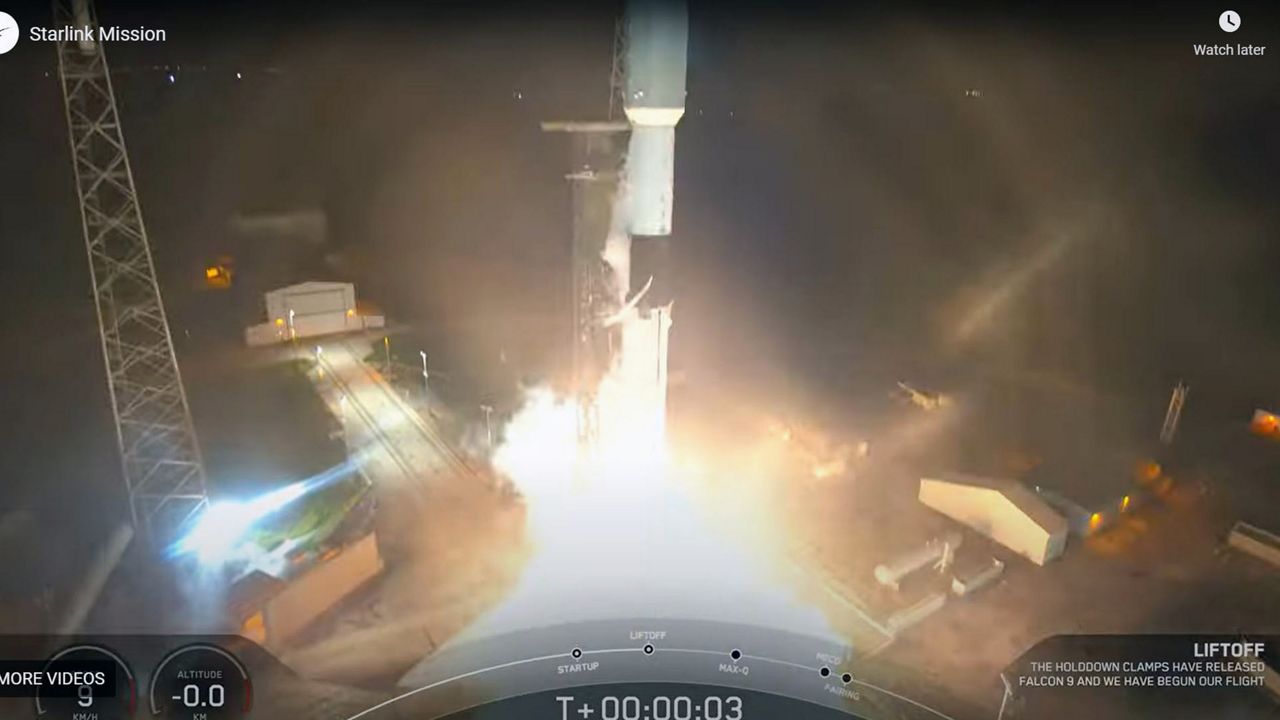CAPE CANAVERAL, Fla. — Between SpaceX’s Saturday night launch of Starlink satellites and NASA’s Artemis I takeoff, the Space Coast is a busy place lately.
What You Need To Know
- SpaceX sent 54 Starlink satellites via Falcon 9 rocket from Cape Canaveral Space Force Station’s Space Launch Complex 40
- The instantaneous launch window was set to open at 10:22 p.m. EDT, but was delayed to 11:41 p.m. EDT due to weather
SpaceX sent 54 Starlink satellites via Falcon 9 rocket from Cape Canaveral Space Force Station’s Space Launch Complex 40.
Liftoff! pic.twitter.com/LWRCAVnJtN
— SpaceX (@SpaceX) August 28, 2022
The instantaneous launch window was set to open at 10:22 p.m. EDT, but was delayed to 11:41 p.m. EDT due to weather, stated SpaceX.
The 45th Weather Squadron gave a forecast of “70➜ 40%” for the launch, stressing that there were concerns of storms and anvil and cumulus clouds.
The mission's first-stage booster, named B1069, is still pretty new to the launch game, with only one under its belt: The CRS-24 cargo mission to the International Space Station in December of 2021.
After the stage separation during Saturday night’s launch, the rocket’s first stage landed on the droneship “A Shortfall of Gravitas” that was stationed in the Atlantic Ocean.
And launch lovers will get another treat as NASA is preparing for the Artemis I liftoff on Monday morning.
About the mission
The Starlink satellites deliver internet access coverage to most of Earth and give a state-of-the-art broadband capability for such things as video calls and streaming, stated the company, which SpaceX operates.
Before Saturday night’s launch, Harvard-Smithsonian Center for Astrophysics’ astronomer Jonathan McDowell charted that there are 2,841 Starlink satellites currently in orbit, with 2,805 working and 2,339 that are operational.



